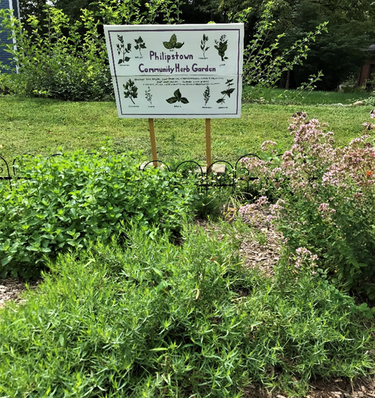 In communities across the Hudson Valley, kids are taking the initiative and being creative. Students at one garden enjoy experimenting with different ways to use herbs, including making shampoo. A group of girl scouts planted an herb garden for their community to use.
In communities across the Hudson Valley, kids are taking the initiative and being creative. Students at one garden enjoy experimenting with different ways to use herbs, including making shampoo. A group of girl scouts planted an herb garden for their community to use. Strides are being made to limit carbon emissions, stop the destruction of natural resources, and restore habitats and ecosystems, but there’s one slight problem. This task is destined to continue for many years to come. So where are the future leaders who will eventually take over the challenges facing humanity?
The children of today will be the leaders of tomorrow, so now is the time to start educating them on what’s going on. Kids need to be included in the projects we’re working on so they will catch the conservation bug and be excited about being outside and a part of the natural world.
Combine Tech with Curiosity
Technology is fantastic and a great asset to everyone, but unfortunately by capturing the hearts and imaginations of the younger generation, it is preventing them from seeing and experiencing the great outdoors. Spending so much time in front of screens, they don’t feel connected to their environment and have no desire to protect something they don’t understand. Yet, if we combine technology with a child’s innate curiosity, we have the perfect set-up to introduce them to nature.
With a little guidance from a parent or teacher, the kid can be introduced to a lot of cool things through activities that encourage them to think, question, and see beyond the plants and trees to the intricate world that exists in their own backyard.
: For instance:
- What Am I? – A version of the game, I Spy, where a child describes a butterfly, tree, or a rock without saying its name so someone else can guess what it is. http://thewildnetwork.com/wild-time-idea/observation-game/
- Make a Bee Hotel – Using plant stems, bamboo, reeds, or canes with a pithy or hollow center, children can create a place for solitary bees to nest. Cut six to eight stems in uniform lengths, tie together with twine, and hang securely from tree branches, giving the bees a place to make a home. https://www.instructables.com/Pollinator-Habitat-Project/
- Build like a Bird – Attempt to construct a bird’s nest using only twigs, moss, and other materials a bird would have available. It’s a lot harder than you’d think! This isn’t very high-tech, but it demonstrates the extraordinary talents and skills birds possess.
- Scavenger Hunt – Armed only with a paper bag and a list, the child has to explore his/her surroundings, locate specific items and place them in the bag. This can be as high or low tech as you want by using a simple paper list or an iPad with more complex items that must be identified online, i.e., an oak leaf instead of just a leaf.
- SEEK Safari – Using the SEEK app on their phone, the child searches for unusual plants, insects, or critters and identifies them through this app. https://www.inaturalist.org/pages/seek_app
- Citizen Science – There are citizen science projects designed for elementary through high school-aged students ranging from counting lightning bugs in your backyard to tagging and monitoring Monarch butterflies during their annual migration. https://scistarter.org/finder

With her signature bright yellow tent, Karalyn Lamb attends community events around New York’s Hudson Valley. Through their Pollinator Pop-Up project, she and her colleagues introduce kids and adults to the wonderful world of pollinators.
It isn’t difficult to get people interested in and excited about the environment. When they find out how uncomplicated it is to help pollinators, they’re ready to do their part. According to Karalyn, easy-to-grow pollinator plants for kids and beginners are zinnias and sunflowers, “and kids especially like things that are edible like strawberries and herbs.”
In communities across the Hudson Valley, kids are taking the initiative and being creative. Students at one garden enjoy experimenting with different ways to use herbs, including making shampoo. A group of girl scouts planted an herb garden for their community to use.
Working in a garden is a fantastic way to groom the conservation leaders of tomorrow. There is so much you can talk about while planting flowers or trees – pollinators/habitats and the importance of both in our lives, how trees provide food and shelter for birds and insects and clean and cool the air. The list of topics is endless.
These simple activities educate, encourage, and empower children to go outside, observe nature, and appreciate the beauty surrounding them. If they learn from an early age how they can make a difference, from there the sky’s the limit!
Building a Foundation
Attitudes, opinions, habits, and ideas are undergoing a transformation right now. A change that is not easy for some older folks but is necessary to stop destroying and start restoring the environment. Involving the younger generations in discussions about deforestation, declining pollinator populations, climate change, and instilling the habits of green living while they’re still young will encourage them to be more mindful of the impact their actions have on Mother Earth.
That doesn’t mean scaring them with the world coming–to-an-end horror stories, but instead emphasizing the importance of reusing and recycling, not littering, being more energy conscious, buying sustainably-sourced food and other goods, not using pesticides, and respecting all the life inhabiting our planet.
Encourage the love of the great outdoors by taking walks, hikes, biking, camping, and letting your kids climb trees, grow a garden, play in the dirt, and explore. It will make them better stewards of the environment and the future leaders our world needs.
Sassy Scribblers on Conservations
 RSS Feed
RSS Feed

